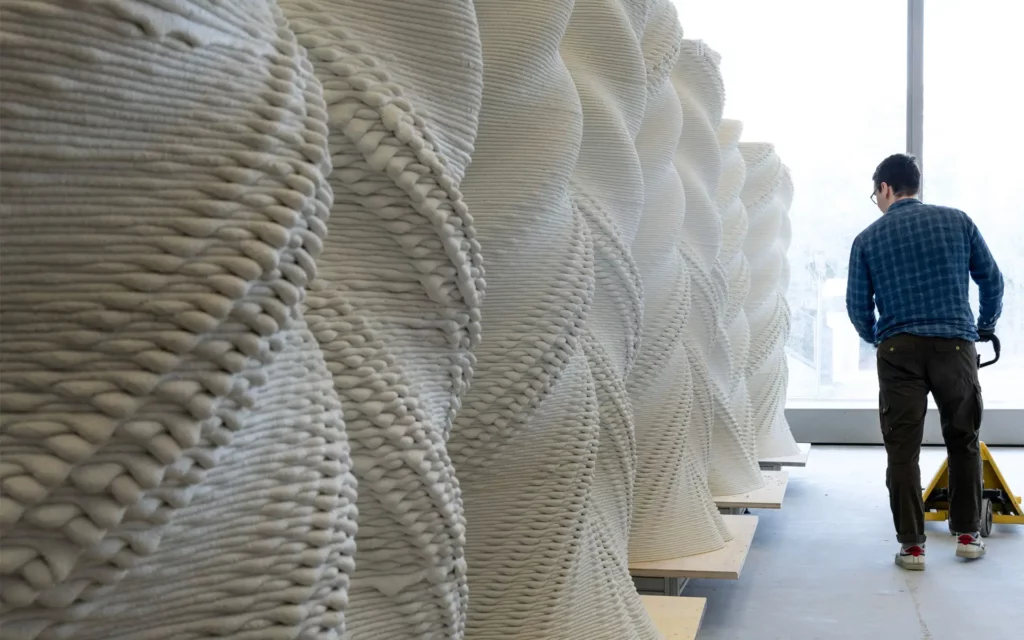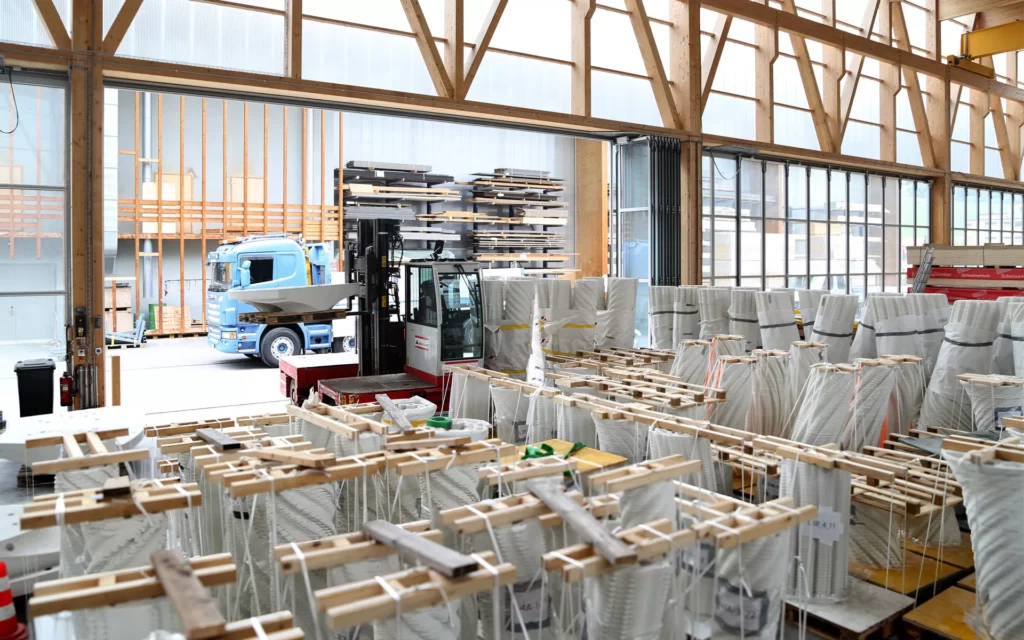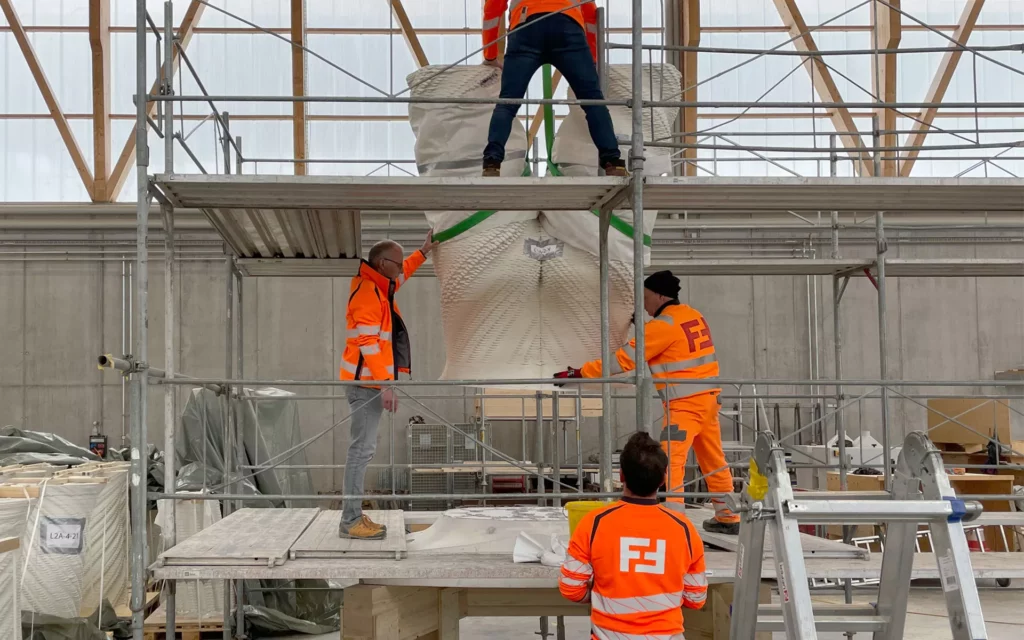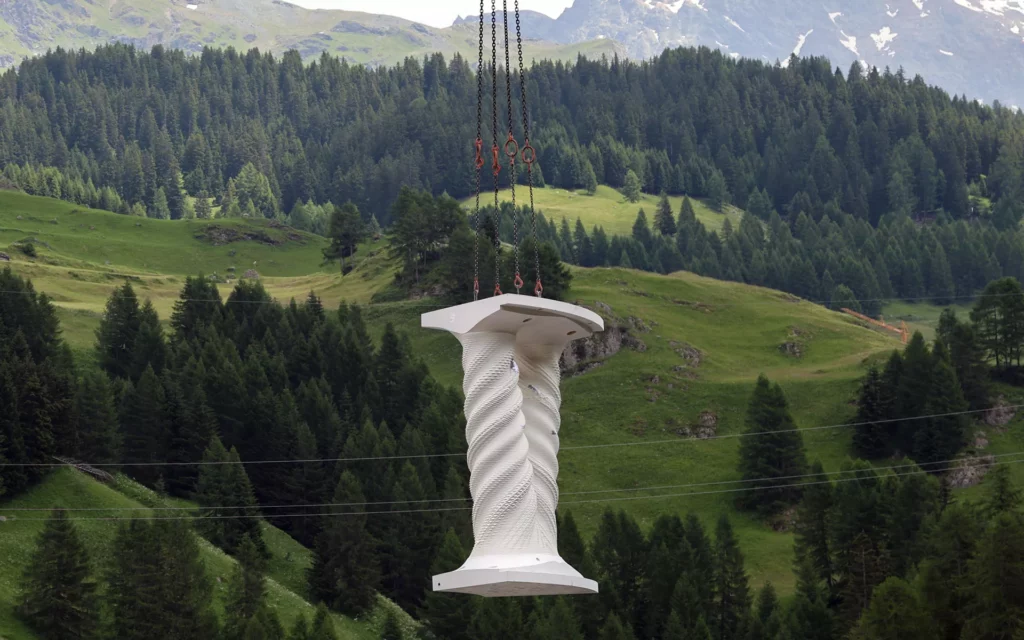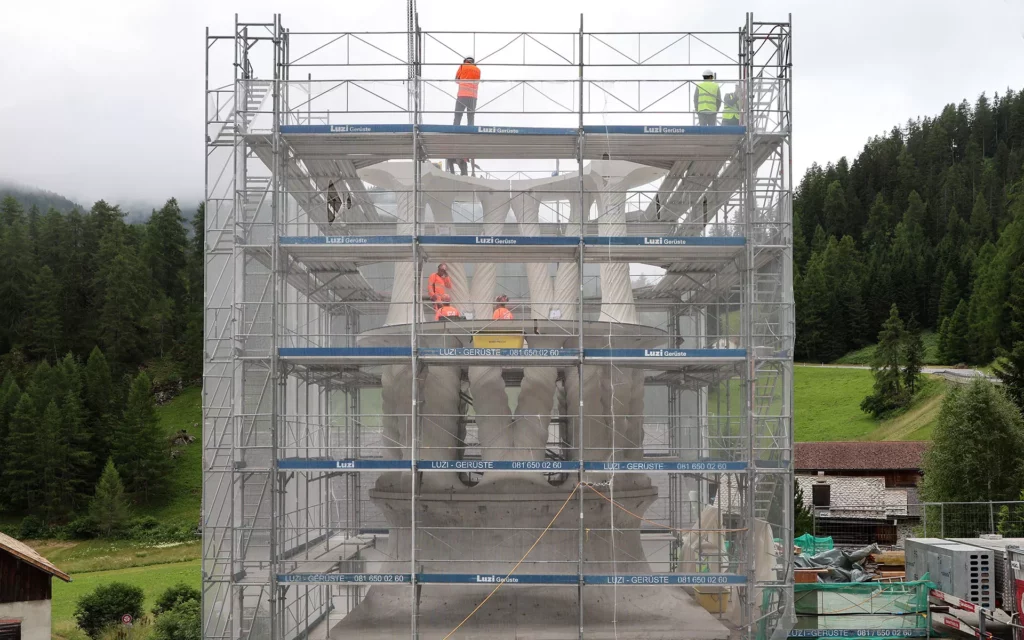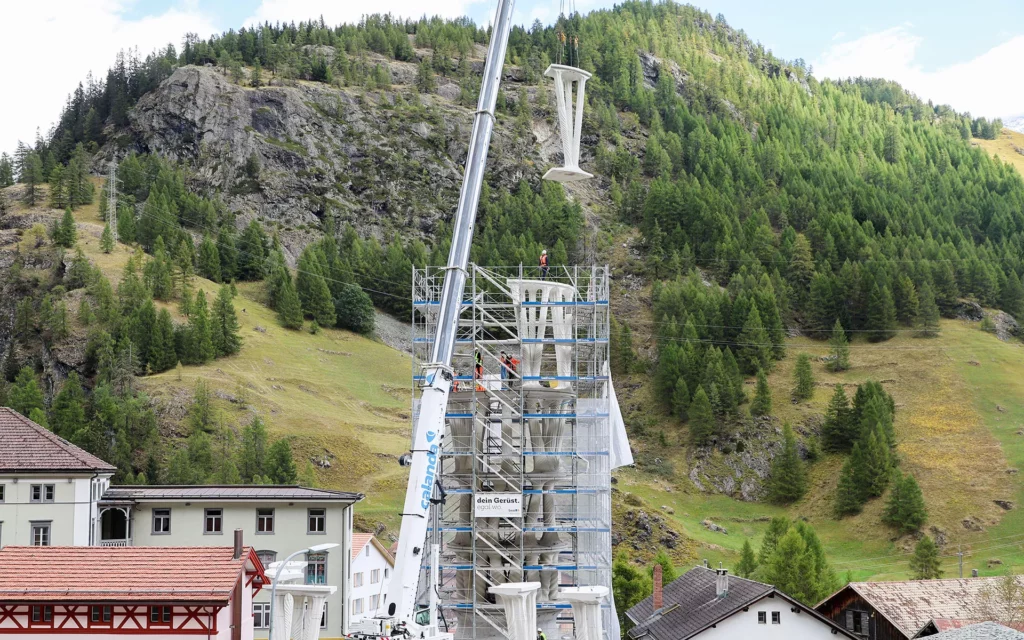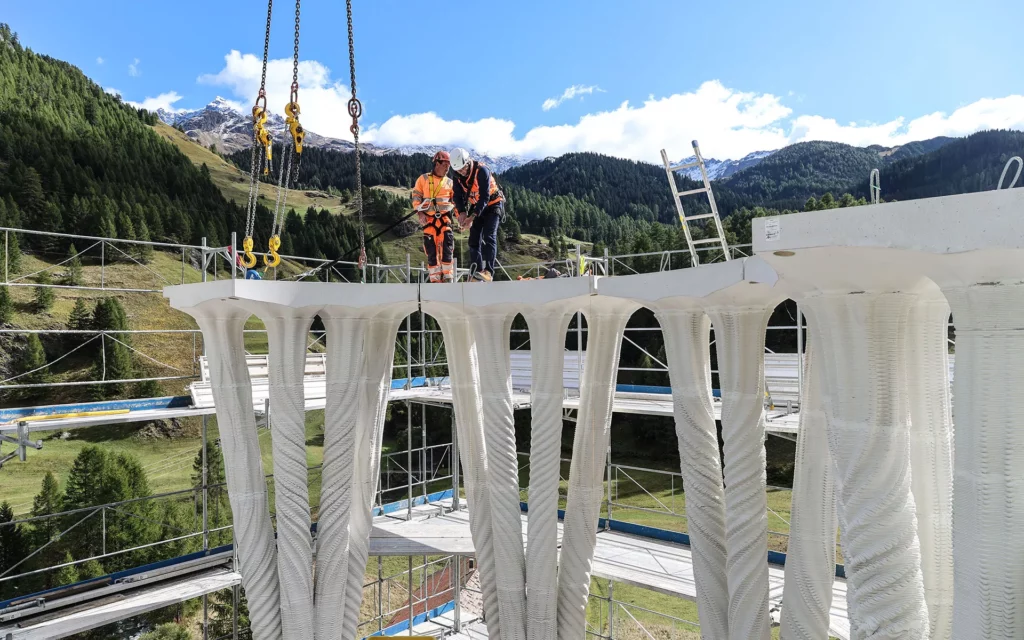The White Tower, now crowned as the world’s tallest 3D-printed structure following its completion in May 2025, emerged from one of the most innovative construction projects in the Alpine region.
The mid-sections of the column shafts were 3D-printed at ETH Zurich’s Robotic Fabrication laboratory at the Institute of Technology in Architecture over a period of 4 months. The separate capital and base of each column were fabricated using an innovative approach of combining traditional casting of concrete with 3D printed plastic formwork developed at ETH Zurich. This strategy allows for achieving a high precision of the interfaces, and permits an efficient production of those repetitive parts.
Maximizing prefabrication for a building in the Alps is ideal due to the region’s harsh weather, remote locations, and short construction windows, which complicate onsite work. By manufacturing components in controlled factory settings, prefabrication ensures quality, reduces environmental impact, and simplifies logistics, while minimizing labor needs and costs in rugged terrain. This approach enables faster assembly, enhances sustainability, and ensures structural reliability against snow loads and seismic activity, all within predictable budgets.
These column segments were transported to Savognin, 10km from Mulegns, where they were joined together into full columns. From there, the completed columns were delivered to the final destination, where they are assembled level by level and screwed together. Each level could be assembled within a single day.
As the tower was designed with dry connections, the disassembly will be equally straightforward as the assembly, without the risk or need of destroying the elements. Using mechanical fasteners like bolts instead of permanent adhesives or wet concrete, these connections allow building components to be dismantled, relocated, and reused elsewhere. Designing for reuse with dry connections enhances sustainability and adaptability by enabling structures to be easily disassembled and reconfigured without material loss. This significantly reduces waste and resource consumption, and aligns with the project’s environmental principles.
Timeline
In 2018, a Strategic Commission from ETH Zurich organised an excursion to the Nova Fundaziun Origen in Val Surses. The exchange aimed to build bridges between culture and science; between the ETH Zurich and the region. These talks established an exceptional creative-scientific collaboration.
In 2019, the Department of Digital Building Technologies at ETH Zurich designed a stage set composed of columns for the gardens of the Villa Carisch in Riom. These columns have weathered the Alpine elements ever since, providing important scientific findings and practical insights that directly informed the White Tower’s development in Mulegns.
2021
June
Project Launch
2022
June
Design Adaptation
August
Installation of a demonstrator
2023
March
Installation of membrane variations at the demonstrator
May
Design Freeze
2024
January
Start of 3D printing at ETH Zurich
February
Preparatory work on the historic plinth
May
Casting of tower’s base; assembly of column elements into full columns in Savognin
June
Last 3D print at ETH Zurich
July
Assembly of the first and second floor
August
Assembly of the third floor
September
Assembly of the fourth floor
November-December
Staircase construction and electrical installation
2025
April
Assembly of the dome; surrounding work
May
Opening
